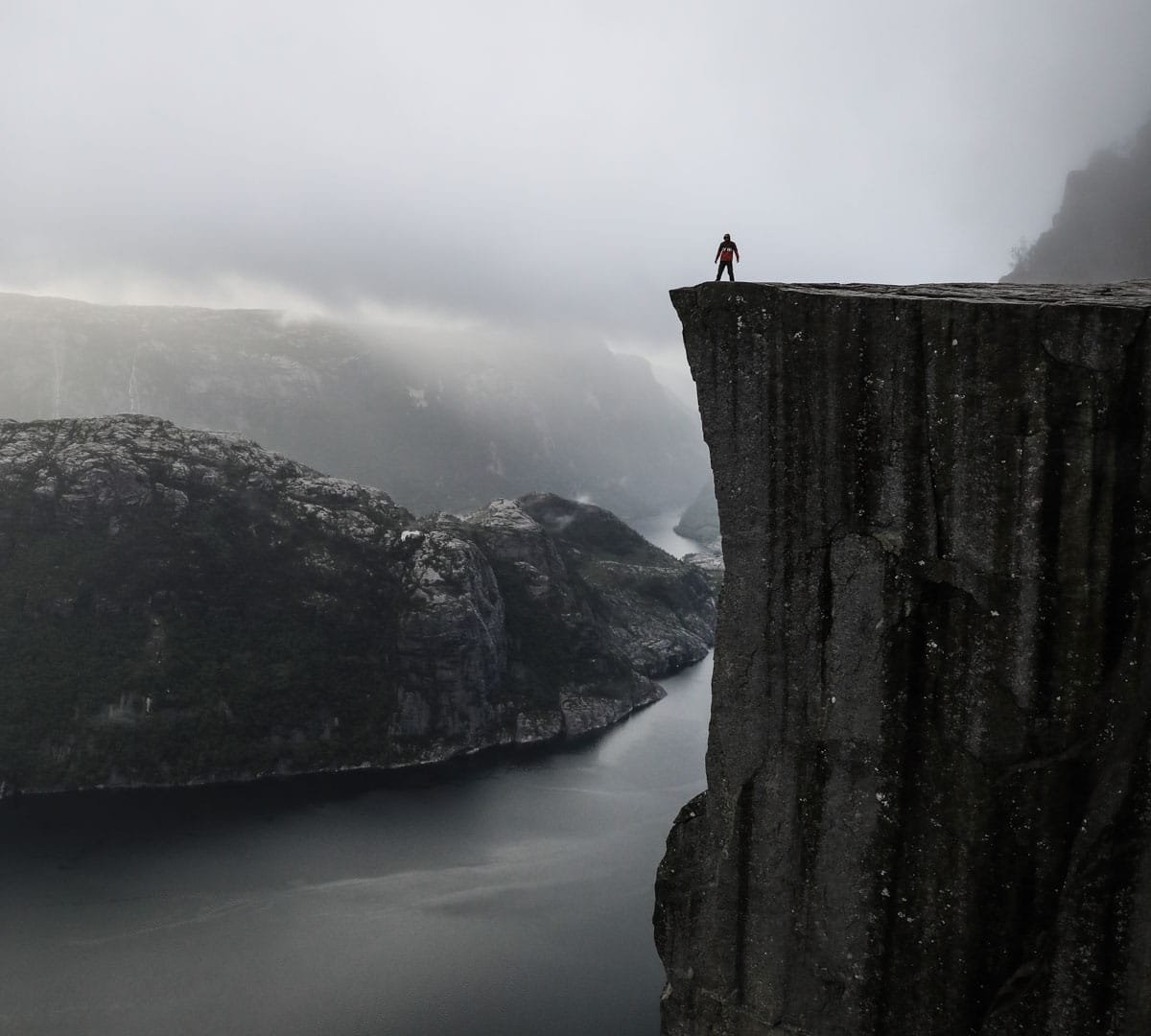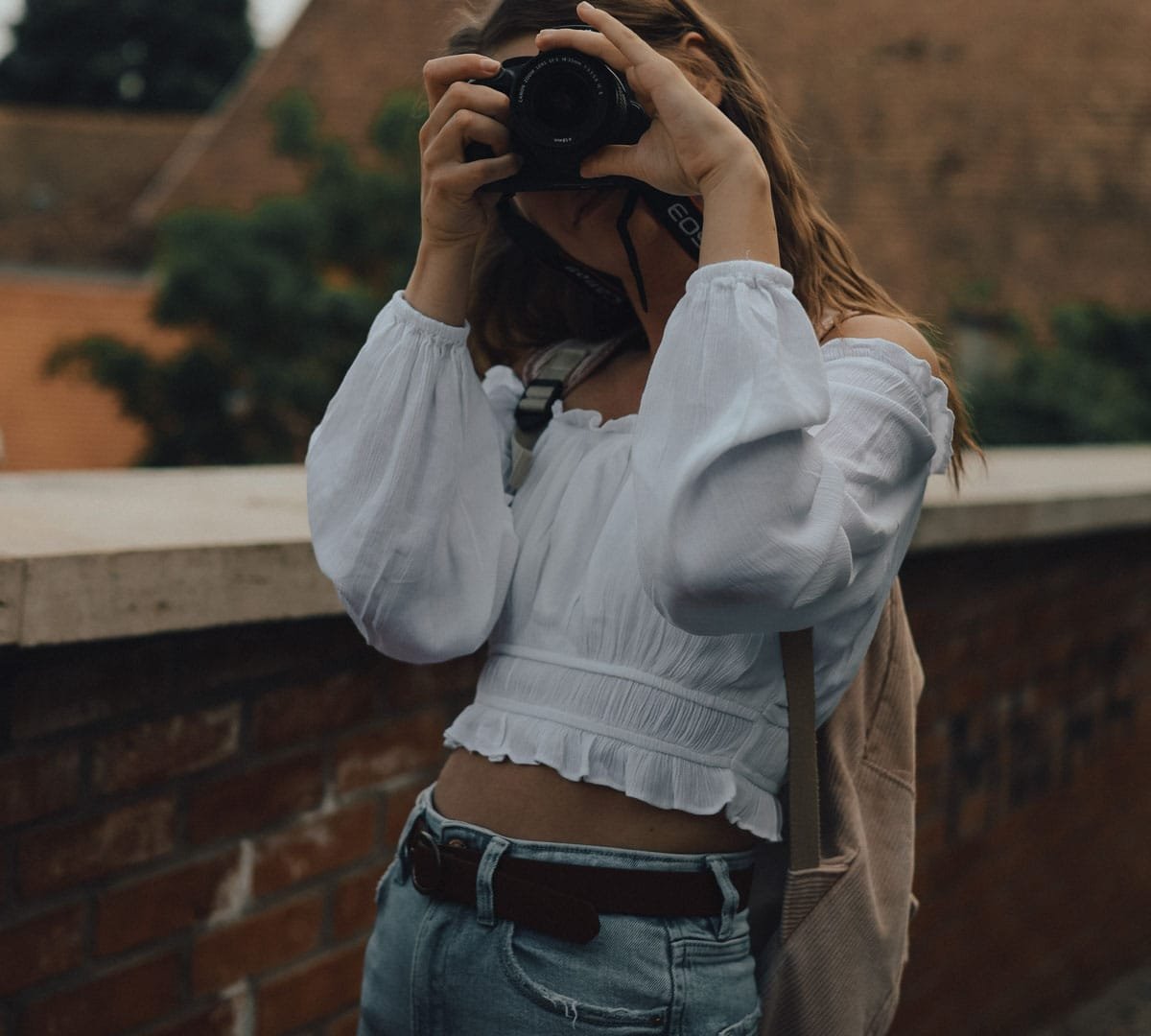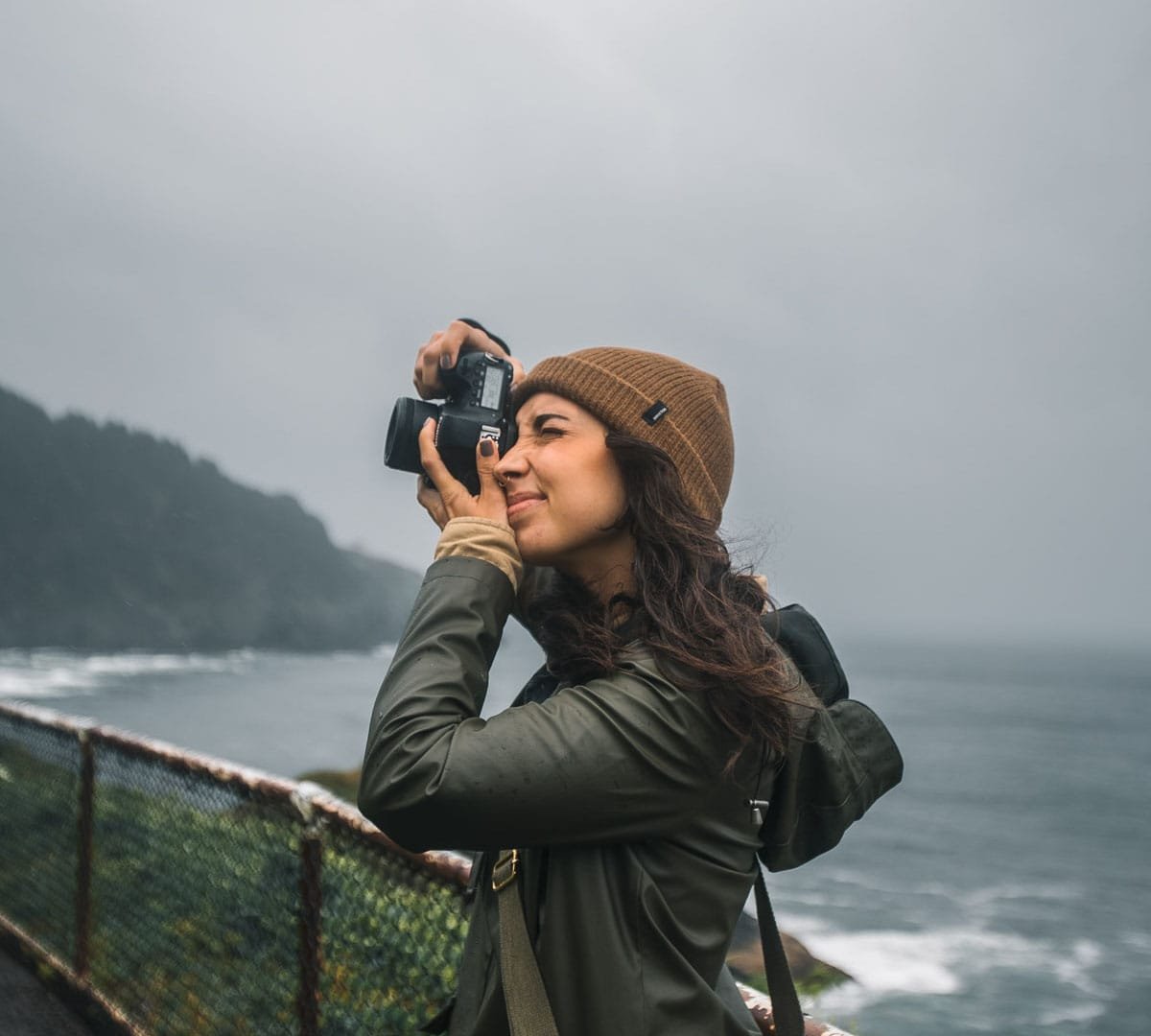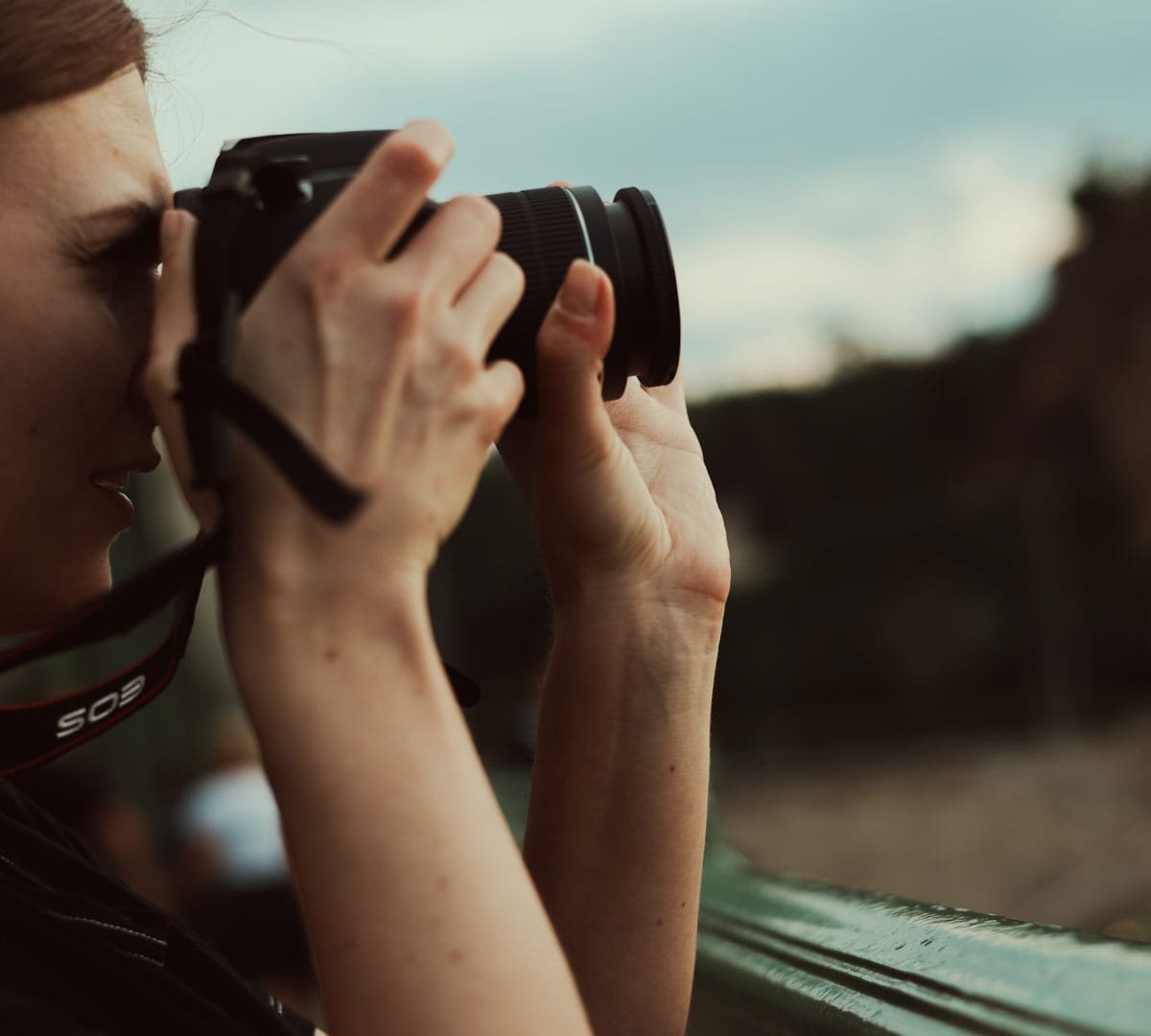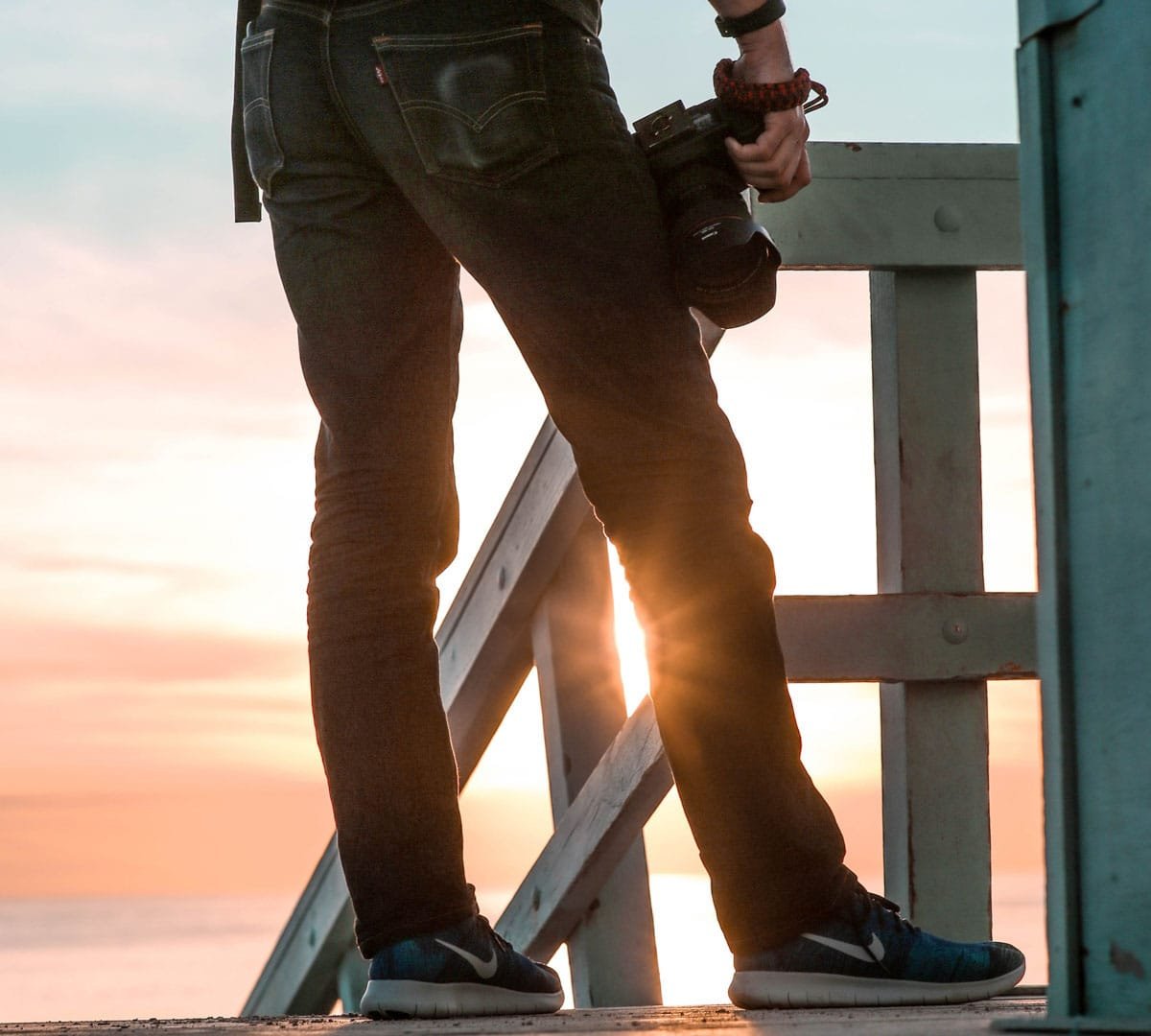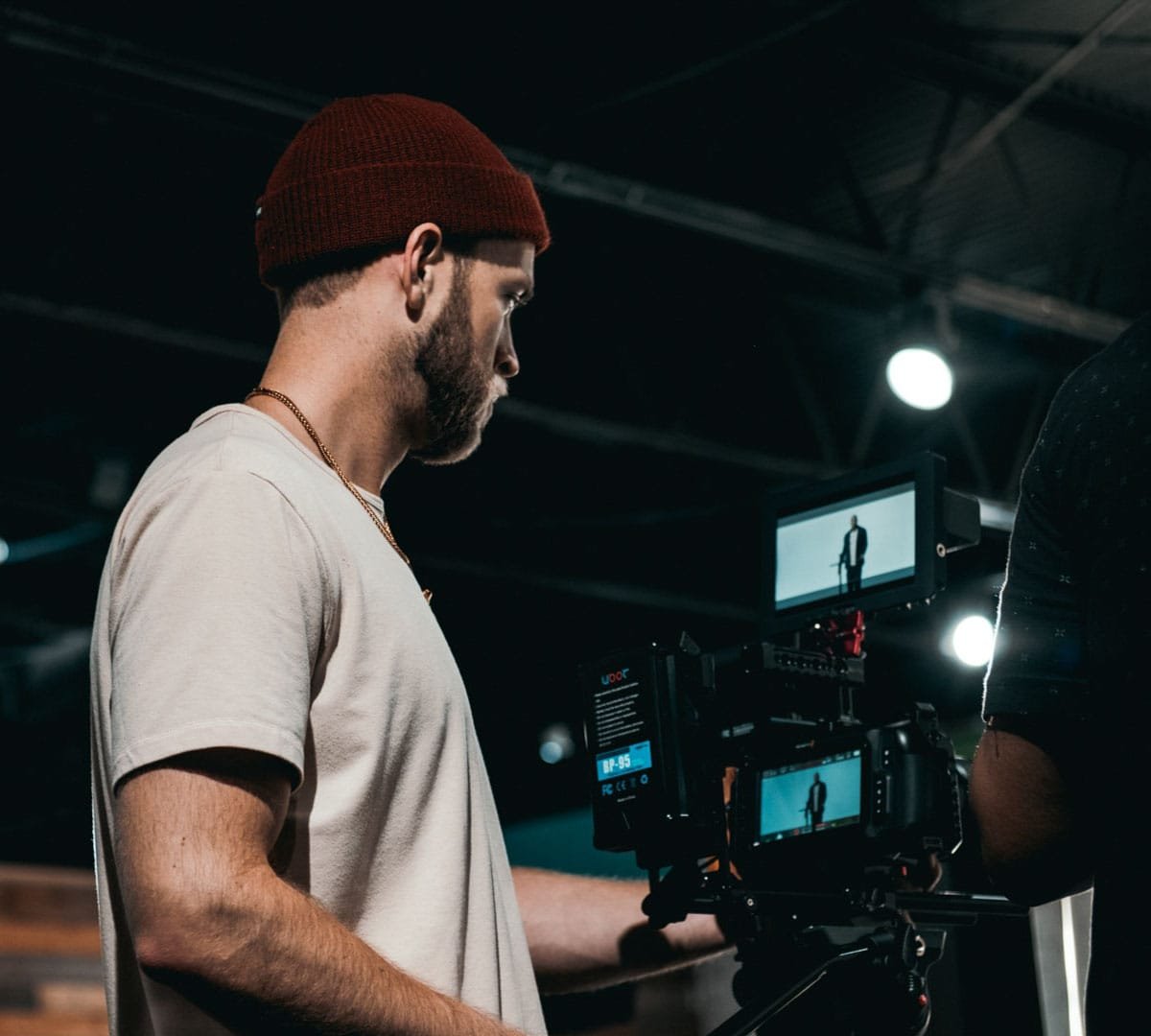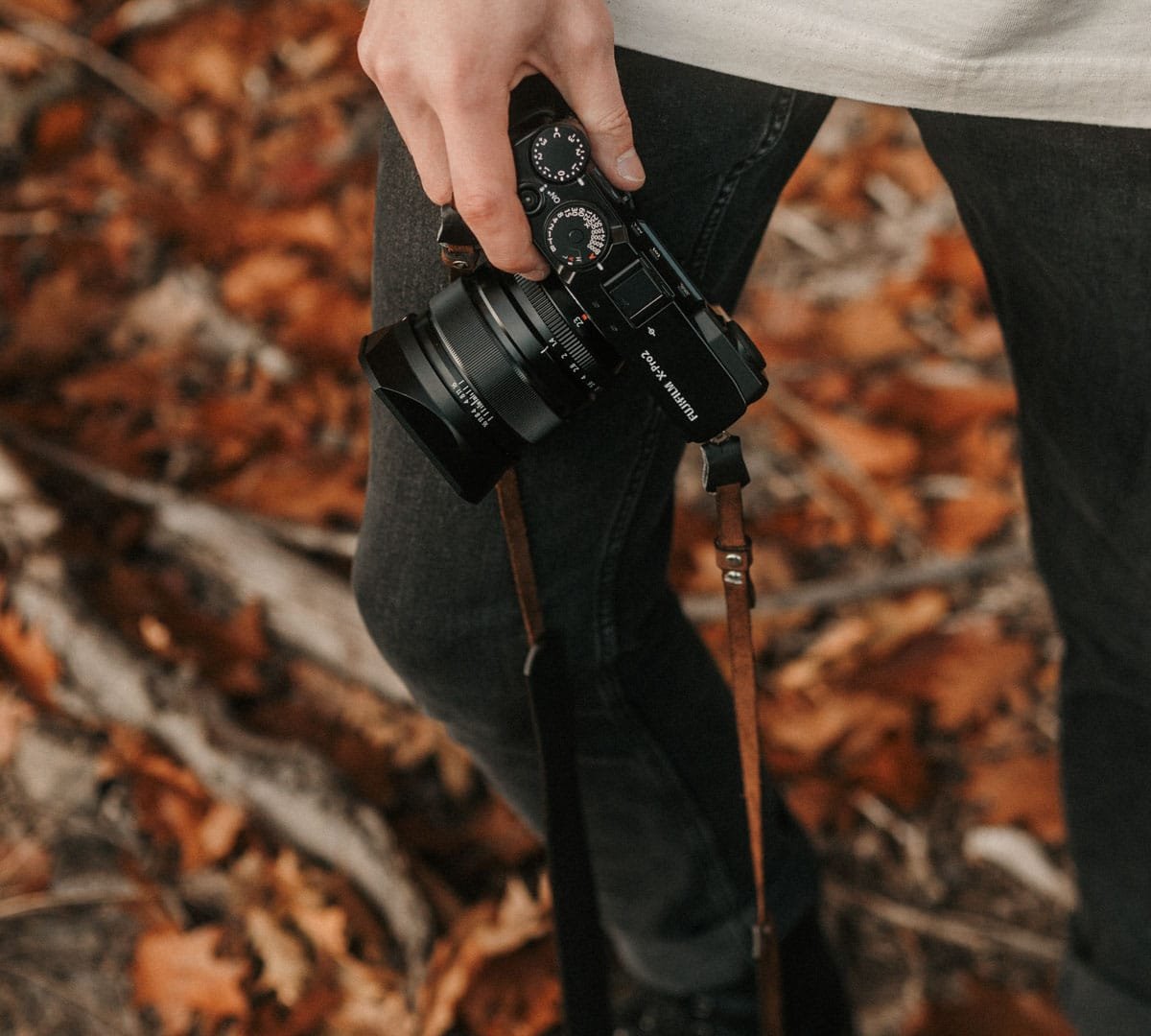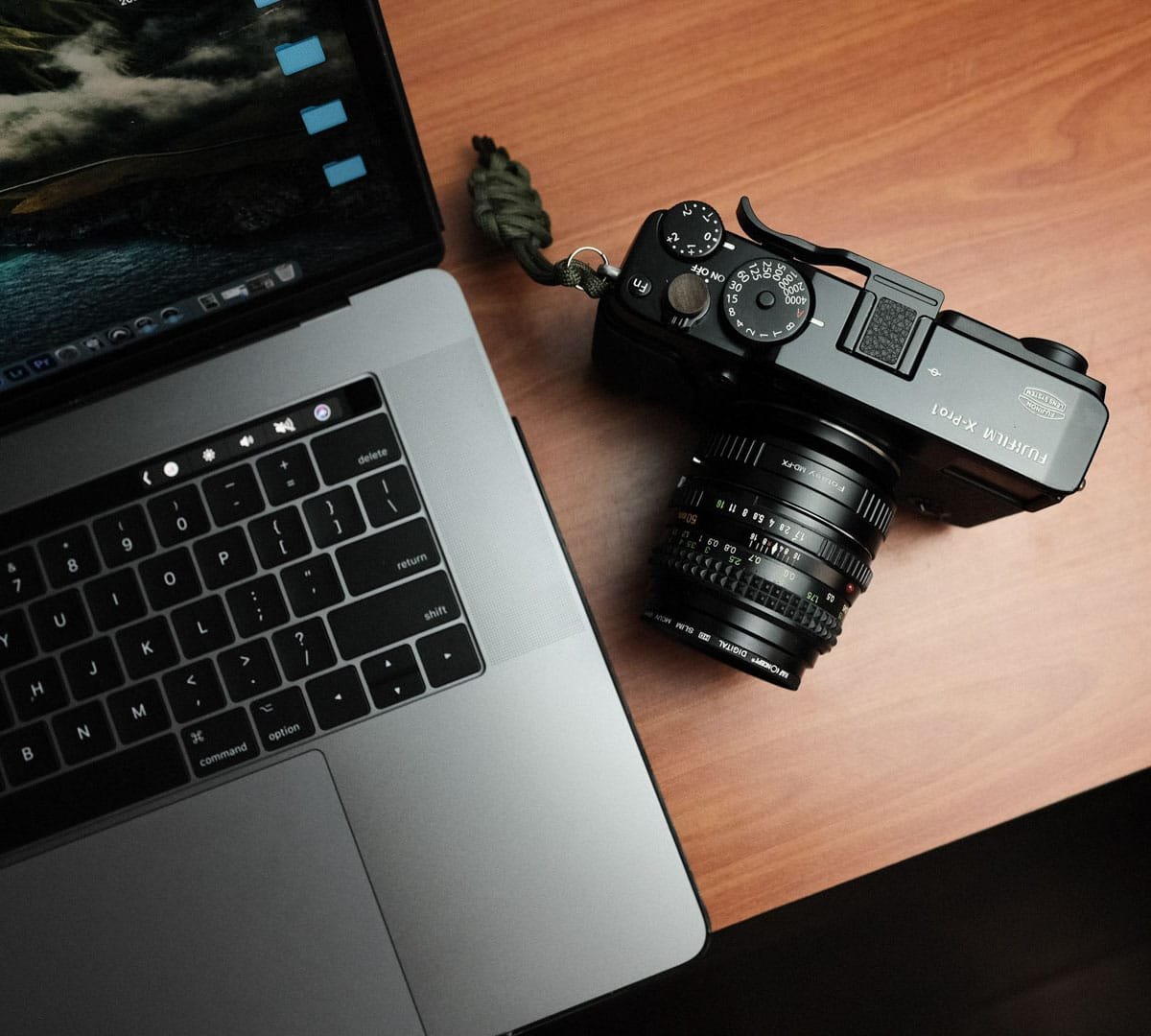How to Become a Photographer: Steps to Kickstart Your Career and Become a Professional Photographer
Introduction: The Path to Becoming a Professional Photographer
Taking the plunge into professional photography is an exhilarating journey! It's all about discovering who you are behind the lens. Are you already envisioning the kinds of shots you want to capture? Or are you still feeling things out? Dive in headfirst, play with different styles, and find your groove.
With today's technology, even your smartphone can be your initial gateway into this world. Professional photography isn't just about capturing a picture; it's about capturing a perspective. As you set out on this path, remember to enjoy every step, every click, and every discovery. Let's get started on this exciting journey!
*FYI: This blog post may contain affiliate links. They help support this blog at no extra cost to you. Thanks for your support!
Understanding the Fundamentals:
The Different Areas and Types of Photography:
Jumping into the world of photography feels a bit like being a kid in a candy store, doesn't it? There are so many flavors to taste, so many pictures to snap! Here's a quick run-through to help you get started:
Portraits: Ever find yourself intrigued by a person's story just by looking at them? Portrait photography lets you dive deep into those tales, one snapshot at a time.
Landscapes: If you're the type to get lost in the mesmerizing beauty of the world, landscape photography might just be your calling.
Street Photography: Ah, the beauty of everyday moments! Street photography is all about capturing the spontaneous, unscripted drama of daily life.
Weddings: Got a soft spot for love stories? Wedding photography lets you be part of the most magical days in people's lives.
Wildlife: If you've ever been enchanted by a bird in flight or a lion on the prowl, wildlife photography might be your jam.
Real Estate Photography: Got an appreciation for spaces? Make properties dreamlike with your captures.
Photojournalism: Be the world's witness. Chronicle moments, both heartwarming and heart-wrenching, as they unfold.
Food Photography: Celebrate visual delights, making viewers' mouths water with each shot.
Travel Photography: Quench your wanderlust! Chronicle diverse cultures, landscapes, and moments on your travels.
Stock Photography: Flex your versatility! Your photos could adorn websites, presentations, and more.
Choosing the Right Genre:
Now, diving into the realm of photography might leave you wondering: Which genre resonates with me?
It's soul-searching time! What sets your pulse racing? A mesmerizing sunset? An infectious, joyful laugh? The rhythmic pulse of urban life?
It's a blend of passion and pragmatism. Consider these steps:
Self-reflection: What kind of stories do you want to tell? What subjects captivate your interest?
Market Research: While passion is pivotal, understanding market demand can steer profitability. For instance, while you might adore portrait photography, employing that interest in graduation or wedding photography might be lucrative in your locale.
Experimentation: Before settling on a niche, dabble in multiple genres. Experience will offer clarity, helping you identify where your passion and skills shine brightest.
Here's a golden nugget: Experiment with your camera—or that smartphone! Explore different genres. You'll gradually find where your passion truly lies. And gear? It's a tool. Your creativity and perspective are the real magic.
Yes, there'll be learning curves. But remember, with passion, every step—even the challenging ones—are part of the exhilarating ride. Embrace the journey, stay curious, and let your lens narrate captivating tales!
Technical Know-How vs. Artistic Vision:
Ah, the eternal dance between technique and soul! As you delve deeper into the world of photography, you'll quickly realize it's both a science and an art.
Fundamentals of Photography: The Science Behind the Shot:
Every great photograph is born from a marriage of technical precision and artistic flair. Let's decode the science first:
Exposure: At its core, photography is all about light. Understanding how much light hits your camera sensor—through the intricate ballet of aperture, shutter speed, and ISO—is paramount. Striking the right balance ensures your shot is neither too dark (underexposed) nor too blown out (overexposed).
Composition: Ever heard of the 'Rule of Thirds' or the 'Golden Ratio'? These are tried-and-true guidelines that can elevate a good shot to a great one. Composition teaches us how to place subjects, horizon lines, and other elements harmoniously within the frame.
Lighting: Light can be a photographer's best friend or trickiest challenge. From the golden hues of the 'Golden Hour' to the stark shadows of noon, understanding the nuances of natural light and how to manipulate artificial lights can dramatically transform your photos.
The Art That Speaks Volumes:
While mastering the technical aspects is crucial, the soul of a photograph lies in its artistic narrative:
Telling Stories: Photography has the power to narrate tales without uttering a single word. From the joyous laughter of a child to the melancholic gaze of an elderly person, your photos can capture and convey deep, profound stories.
Evoking Emotions: Ever looked at a photograph and felt a surge of emotions? Joy, nostalgia, sadness, hope—a well-composed photograph has the power to stir the soul. It's about capturing that fleeting moment, that subtle emotion, that raw essence which resonates with viewers.
To truly thrive in the world of photography, it's essential to strike a harmonious balance between the technical and the artistic. Let the science guide your hand, but always let your heart and vision lead the way. Every snapshot you take is a fusion of precision and passion, and that's the beauty of photography.
Intuition and Instinct:
Often, the magic of a photograph comes from an unplanned, spontaneous moment. While understanding the science is crucial, trusting your instincts can sometimes lead to the most memorable shots. It's that gut feeling when you know you're about to capture something special.
Feedback and Critique:
Just as writers benefit from editors, photographers can grow immensely from constructive feedback. Sharing your work with peers, mentors, or photography groups can offer fresh perspectives and help you refine your artistic vision. Moreover, being open to critique helps in sharpening the technical aspects of your work.
Continuous Learning:
The photography industry, like any other field, is evolving. New techniques, equipment, and styles emerge regularly. A dedicated photographer not only masters the current trends but remains a lifelong learner, always curious and eager to adapt.
Ethics in Photography:
Especially relevant if discussing photojournalism or documentary photography. It's crucial to represent subjects truthfully, without manipulation that alters the integrity of the scene. Respect for subjects and understanding the impact of your photographs on their lives is paramount. If you are doing wildlife photography, be considerate of wildlife and their environments. For all photography with human subjects, consider their privacy and ask for their consent. Make sure to follow your laws for photographing subjects and using photos with subjects.
Learn Photography: Education and Training in Photography: Is Formal Education the Only Path?
The Myth of a Degree in Photography:
In our digital age, it's more evident than ever that a formal education isn't the only path to success. Some of the most renowned creators gracing our social media feeds are self-taught, having never stepped into a traditional photography class. Their success underscores a crucial point: passion, practice, and persistence often hold more weight than a diploma.
Starting Early: If you're young and passionate, don't wait for college to dive into photography. The world around you is your classroom, and every photograph you take adds to your learning. The earlier you start, the longer runway you give yourself to hone your skills.
Advantages of a Degree: While formal education in photography isn't mandatory, it has its merits. Structured courses, access to top-notch equipment, and mentorship opportunities can give budding photographers a solid foundation. But it's just one of many paths.
Seizing Opportunities During School:
For those in school or college, an array of opportunities awaits, often right at your doorstep.
School Clubs: From yearbook committees to journalism and sports journalism clubs, schools are brimming with platforms that can give you real-world experience. Such platforms not only allow you to practice but also offer a glimpse into the professional world of photography.
Freelancing for Peers: Offering your photography services to friends or graduating students can be a brilliant start. It's a win-win; they get professional photographs, and you gain valuable experience. However, always ensure the legalities are in place - like getting consent and model releases if the photographs have a commercial angle.
Announce Yourself: The power of word-of-mouth can't be overstated. Let your circle know about your passion. By simply identifying as a photographer, you'll be amazed at how many opportunities come knocking.
The Continuous Growth of a Creator:
In the realm of photography, stagnation is the real enemy. Evolving, learning, and experimenting should be at the heart of every photographer's journey.
Online Learning: Course platforms and YouTube are treasure troves of knowledge. Whether it's mastering the basics, diving deep into a niche, or understanding the business aspects of photography, there's material out there for you.
Workshops: Immersive, intensive, and incredibly enlightening, workshops offer hands-on experience. Learning from seasoned professionals can provide insights that are hard to gain elsewhere.
Books and Articles: Some of the best lessons are hidden within the pages of books or in insightful articles. They offer deep dives into techniques, histories, and the philosophies of great photographers.
Social Media: It's not just for scrolling! Following accomplished photographers can be both inspiring and educational. Their work, their stories, and their journeys can be a goldmine of knowledge.
Practical Application: At the end of the day, the best teacher is experience. Regularly taking pictures, experimenting with different styles, techniques, and genres, and seeking feedback will refine your skills like nothing else.
Photography, as a craft and profession, is a continuous journey of growth. Formal education can be a part of this journey, but it's not the only path. What truly matters is your commitment to the craft, your eagerness to learn, and your passion for capturing the world through your lens. As you navigate this exciting terrain, remember that every snapshot you take is a step forward in your journey. Keep clicking, keep learning, and most importantly, keep growing!
Building a Portfolio: More Than Just Pictures, It's Your Story
The Essence and Strategy of a Portfolio:
Your portfolio is more than just a collection; it's a testament to your journey, skills, and vision in photography. Think of it as your visual CV, an introduction to you as a photographer.
Purpose Over Perfection: Especially when starting, it's easy to get caught in the whirlwind of curating the 'perfect' portfolio. Remember, it's about progression, not perfection. At this stage, your focus should be more on honing your skills and understanding your artistic leanings.
Choosing Your Shots: Quality should always triumph over quantity. It might be tempting to showcase a vast number of photos, but selecting a few of your shots that truly represent your style and skills will have a more significant impact.
Who Is Your Portfolio For? As you advance in your photography journey, it's beneficial to tailor your portfolio to your target audience. If you're aiming for wedding photography, your portfolio should resonate with couples looking for a photographer. Similarly, if it's wildlife, your shots should transport viewers into the wilderness.
Showcasing Your Work: Navigating Platforms and Purpose
There is an abundance of options available when it comes to platforms, leaving you with a wide range of choices to consider. Here's how to make the most of them:
Personal Websites: Consider this your digital gallery. A well-designed website offers visitors an immersive experience, letting your photos take center stage. Ensure it's easily navigable, mobile-friendly, and showcases your best works. When you first start it, it's okay to have just a portfolio. As you grow, you might consider fully leveraging your website as a sales and marketing tool.
When you are ready, check out our guide to Building the Perfect Photography Website.Online Platforms:
Instagram: Perfect for photographers! With its visual-centric design, Instagram is ideal for documenting your journey. Remember Peter McKinnon's words about sharing photos, "it's not about 'bangers only'". Share your highs, your lows, and everything in between. Let your followers be a part of your authentic journey.
TikTok: A newer platform for photographers, but a potent one. Here, you can not only share your pictures but also quick behind-the-scenes clips, editing tutorials, or even photography hacks.
Behance & 500px: Platforms like Behance and 500px are designed for photography enthusiasts and professionals. They offer a more curated audience, often comprising of peers, professionals, and potential clients.
Our strategic Squarespace template tailored for Photographers to get their professional website up and running sooner with professional level design at a fraction of the price.
Balancing Authenticity and Curation:
As you evolve, your portfolio will too. But throughout this journey, it's essential to strike a balance. While sharing your journey authentically is crucial, especially when building a brand, there's also value in curating some of your best works, particularly when pitching to clients or showcasing on professional platforms.
One approach suggested is to use social media platforms like Instagram or TikTok to document your journey. Let your followers see your growth, your experiments, and even your occasional missteps. It makes you relatable and authentic.
On the other hand, keep your website or professional platforms like Behance for a more curated selection. Here, showcase the works that you believe best represent your skills and style. This can be particularly useful when you're looking to attract clients or collaborations.
Mentorships and Networking: Connecting, Collaborating, and Elevating Your Craft
The Magic of Mentorship:
Why Seek a Mentor in Photography?
Diving into the vast world of photography can sometimes feel like navigating a labyrinth. Here's where a mentor can play a pivotal role. A mentor brings with them a wealth of experience, knowledge, and, most importantly, insights that books or courses might miss. Having someone guide you, correct you, and celebrate with you is invaluable. Some of the core benefits include:
Guided Learning: Instead of fumbling through trial and error, a mentor can provide targeted guidance, helping you hone specific skills faster.
Insider Knowledge: From understanding industry nuances to getting the lowdown on the latest trends and tools, mentors can provide insider insights that could prove priceless.
Constructive Feedback: A fresh pair of experienced eyes can offer feedback that's both constructive and actionable, pushing you to elevate your work.
Networking: Your mentor can introduce you to industry contacts, expanding your professional network exponentially.
Reaching Out to Potential Mentors:
The quest for a mentor might feel daunting, but remember, every professional started somewhere, and many are keen to give back. Here's how you can approach them:
Do Your Homework: Before reaching out, research potential mentors. Understand their work, their journey, and their teaching style if they have mentored before.
Craft a Genuine Message: When you contact a potential mentor, be sincere. Express your admiration for their work, your eagerness to learn, and why you believe they would be the perfect mentor for you.
Be Respectful of Their Time: Remember, professionals are often juggling multiple commitments. If they can't commit, respect their decision and express gratitude for their consideration.
Consider Formal Mentorship Programs: Some professional organizations or photography schools offer structured mentorship programs. It might be worth exploring these avenues.
Thriving in Photography Communities:
Discovering Local Photography Clubs and Associations:
Communities are the beating heart of the photography world. Local clubs or associations can be your gateway to:
Skill-building Workshops: Many clubs organize regular workshops focusing on different aspects of photography.
Photowalks: Join fellow enthusiasts for photowalks, exploring locales and capturing moments together.
Exhibitions: Showcase your work, get feedback, and immerse yourself in the work of fellow photographers.
Networking: Connect with local photographers, studios, and businesses that might offer collaboration opportunities.
Online Communities: Harnessing the Digital Pulse:
The digital realm is bursting with platforms for photographers. Some popular ones include:
Facebook Groups: From general photography groups to niche-specific ones, you'll find a plethora of communities. Engage in discussions, share your work, seek feedback, and even find potential clients.
Forums: Forum websites are bustling with discussions on gear, techniques, post-processing, and more.
Reddit: Subreddits like r/photography or r/AskPhotography can be goldmines for insights, advice, and discussions.
Why Networking is a Photographer's Best Friend:
Collaboration Opportunities: Networking can lead to collaborative projects, allowing you to explore styles or genres you haven't delved into before.
Job Leads: Whether you're freelancing or looking for a permanent role, your network can often provide leads before they're advertised broadly.
Learning from Peers: Networking isn't just about getting work. It's also about learning, sharing experiences, discussing challenges, and collectively growing.
The journey of photography, while deeply personal, thrives on connections. Whether it's the sage advice from a mentor or the camaraderie among community members, these relationships can shape, refine, and elevate your craft. Engage actively, learn continuously, and remember, every interaction is a potential stepping stone in your illustrious photography journey.
Developing a Unique Style: Finding Your Niche and Crafting Your Photographic Signature
The Essence of a Distinct Style: The Power of Differentiation in a Crowded Field:
Photography, in many ways, mirrors art. Like artists with their unique brush strokes, photographers, too, must strive for a distinct signature. With countless talented photographers vying for attention, what makes one stand out? It's often their unique style.
Standing Out: In a market saturated with images—from candid street shots to ethereal landscapes—a consistent style helps differentiate your work, making it instantly recognizable amidst the sea of photos.
Building Loyalty: When audiences can identify your style, they're more likely to return for more, building a loyal base of admirers or clients who appreciate your particular aesthetic.
Professional Recognition: A consistent style often translates to professionalism. It shows dedication, understanding, and mastery over one's craft, making you a more attractive prospect for potential collaborations or clients.
Crafting and Refining Your Unique Aesthetic:
Reflect, Analyze, Improve:
A key step to developing your style is introspection. Spend time with your portfolio:
Self-critique: Go through your past works. What patterns emerge? Do certain themes, colors, or moods dominate? Which of these resonate most with your vision? Use these insights as a foundation.
Feedback Loop: Sometimes, an external perspective can offer invaluable insights. Share your work with peers or mentors and seek their thoughts on what makes your photography distinct.
Drawing the Line Between Inspiration and Imitation:
Inspiration is the fuel for any creative field, but there's a fine line between being inspired and imitating:
Broaden Your Inspirational Horizons: Instead of only looking at photographers, draw inspiration from various art forms—be it painting, literature, music, or cinema. This can lead to a more eclectic and personal style.
Admire, Analyze, Adapt: When you admire a piece of work, break down what exactly appeals to you. Is it the color palette, the composition, or the mood? Once you pinpoint it, think of how you can adapt that element into your work, giving it your own twist.
Embrace the World of Experimentation:
One of the most exhilarating aspects of photography is its boundless scope for experimentation:
New Techniques: Whether it's a new shooting technique or a post-processing method, always be open to trying something different. It could lead to unexpected and delightful results, adding a fresh facet to your style.
Gear Exploration: While gear isn't everything, different equipment can offer varied results. A lens you've never used, or a camera with a different sensor, might give your photos a different feel.
Post-processing Styles: Dive deep into the world of post-processing. Experiment with different software, presets, or even go back to basics with film-style processing. Each choice can drastically alter the final image, helping you further define your style.
Your style is your photographic fingerprint—unique, evolving, and deeply personal. While the journey to discover and refine it might be continuous, it's this very pursuit that sets you apart. Embrace the process, stay curious, and let every click of the shutter take you one step closer to crystallizing your unique visual voice in the world of photography.
Running a Photography Business: Embarking on Your Entrepreneurial Journey
Launching with Confidence: Unveiling the Initial Investments
Stepping into the world of professional photography is thrilling! Like every passionate entrepreneur, you'll want to set the stage right. If you are plan on working for a studio or company, these might be provided by them. However, if you are planning on starting your own business, here are the key investments to consider:
Photography Equipment: This isn't just about cameras and lenses. Think tripods, external flashes, reflectors, studio lights, backdrops, and even props. Over time, maintenance or upgrades might add to these costs. Don't worry about getting everything at once; start with what you have and grow your equipment over time. Prioritize items necessary for what you do.
Photo Editing Software: While there are free software options available, premium ones like Adobe Photoshop or Lightroom come with subscription costs. They offer advanced tools essential for professional-grade post-processing.
Legal Documents: Photography often involves legalities. Whether it's model release forms, property release, or contracts for gigs, it's crucial to have proper documentation.
Check out The Legal Paige for Legal Contract Templates.*Business Licenses: Depending on your location, you might need specific licenses to operate legally. This might involve one-time costs or recurring renewal fees.
Marketing: Building a brand requires investment. Whether it's a personal website, business cards, or paid advertising on social media platforms, these are essential costs to factor in.
Legal Groundwork: Protecting Your Art and Interests
Understanding Copyright: As the creator, you automatically own the rights to your work. This means others can't reproduce, distribute, or use your photos without permission. Be aware of these rights and enforce them.
Read more at The Legal Paige: Photography Copyrights: What You Should Know!*Licensing: Sometimes, you might license your photos to others for specific uses. Licensing agreements define how, where, and for how long the photo can be used. It's a source of revenue for photographers.
Contracts: Especially crucial for big projects or events. A contract clarifies deliverables, timelines, payment terms, and other specifics. It ensures both parties are on the same page and offers legal protection.
Check out The Legal Paige for Legal Contract Templates.*
Determining Your Worth: Strategically Pricing Your Services
Market Research: Understand the going rates in your genre of photography within your region. It helps to set competitive prices.
Experience and Skill Level: As you grow and refine your skills, you can command higher prices. A seasoned wedding photographer, for instance, will charge more than someone just starting out.
Costs and Overheads: Factor in the costs of equipment, transportation, post-processing, and other expenses. Ensure your pricing covers these costs and leaves room for profit.
Making Your Mark: Visibility in the Digital World
Personal Website: Your portfolio's digital home. Invest in a user-friendly, mobile-optimized website that showcases your best works and offers clients an easy way to reach out.
Check out our guide to Building the Perfect Photography Website.Social Media: Platforms like Instagram, Pinterest, and Facebook are crucial for photographers. Regular posts, behind-the-scenes content, and engagement with followers can significantly boost your visibility.
SEO and Online Advertising: A well-optimized website can attract organic traffic. Investing in online ads can also place your services in front of potential clients actively looking for photographers.
Networking: Join online forums, participate in workshops, attend industry events. Building relationships can often lead to referrals and collaborations, amplifying your business prospects.
Turning your passion for photography into a thriving business involves a blend of artistry and entrepreneurship. From understanding costs and legalities to marketing your skills, each step is crucial in your journey. As you navigate this path, stay informed, stay adaptable, and most importantly, stay true to your artistic vision.
Navigating the Hurdles in Professional Photography: Rising Above with Resilience and Creativity
Every art form, photography included, is a journey sprinkled with challenges. However, each challenge presents an opportunity for growth and renewed passion. Let's explore some common hurdles and the silver linings they bring.
Embracing the Competitive Landscape:
Perspective Shift: Instead of viewing competition as a threat, see it as a chance to refine your skills. Every photographer brings a unique perspective; celebrate yours.
Continuous Learning: Competition can be a motivator to learn more. Attend workshops, subscribe to photography journals, or simply step out with your camera more often. Remember, your best competition is your past self.
Collaboration Over Competition: Sometimes, joining hands with fellow photographers can lead to incredible results. Networking isn't just for finding clients; it's also for forging alliances with peers.
Reigniting the Spark: Battling Creative Slumps
Stepping Back: It might sound counterproductive, but sometimes taking a break can be the best way to rekindle creativity. Use this time to absorb, ponder, and rejuvenate.
Seek Inspiration: Dive into photography books, explore nature, or immerse yourself in art galleries. Often, the spark you seek lies outside of routine.
Personal Projects: Dedicate time to projects just for you, free from client demands or market trends. This not only hones your skills but can also reignite the joy of capturing images.
Comfort in Routine: Establishing a daily or weekly photography ritual, even if it's just snapping a few photos on a morning walk, can create a rhythm, helping to ease out of slumps.
Tactfully Navigating Difficult Waters: Managing Challenging Clients and Projects
Clear Communication: Most misunderstandings arise from miscommunication. Always be clear about deliverables, expectations, and timelines.
Stay Calm and Empathetic: Understand that each client comes with their own set of pressures and expectations. Staying patient and trying to understand their viewpoint can defuse tensions.
Know When to Say No: This might be the most challenging yet essential skill. If a project doesn't align with your values or is too taxing, it's okay to decline politely.
Seek Feedback: Every project, especially the challenging ones, offers learning experiences. Post-project, reflect on what went well and areas of improvement.
The Importance of Breathers: Carving Out Time for Relaxation and Creativity
Prioritize Self-Care: Just as a camera needs regular maintenance, so does the photographer. Whether it's a hobby outside of photography, meditation, or simply reading a book, find your haven.
Schedule 'Creative Days': Dedicate certain days or hours solely to experimenting with your craft. No pressures, no deliverables, just you and your camera.
Stay Connected: Engage with family and friends. These connections not only offer relaxation but often are sources of inspiration and encouragement.
Nature Breaks: Immersing yourself in nature can be a therapeutic way to relax and also spark creativity. The rustling leaves, a distant bird song, or the mesmerizing waves can be just the muse you need.
Professional photography, while deeply fulfilling, is not devoid of challenges. Yet, every challenge carves a photographer, refining their skills and enriching their soul. As you journey through this captivating realm, remember that the lens captures what the heart sees. So, nurture your heart, stay connected with your passion, and let every challenge be a stepping stone towards greater artistic horizons.
Want a professional website to go with your professional career?
Save time with our Ready-To-Go Strategic Squarespace Template for Photographers, which implements the strategies discussed in this article and more. Elevate your online presence today!
Conclusion: The Ongoing Journey of a Photographer
The Pillars of Passion and Perseverance:
The realm of photography is vast, filled with endless possibilities and challenges alike. Just like the varying shades in a photograph, a photographer's journey will be filled with moments of brilliance and bouts of adversity. But it's the undying passion for capturing the world through a unique lens and the relentless perseverance in the face of challenges that distinguishes a fleeting interest from a lifelong devotion.
In the words of the iconic photographer Steve McCurry, "My life is shaped by the urgent need to wander and observe, and my camera is my passport." Let that passion be your compass, guiding you even when the path seems murky.
The Ever-Evolving Landscape of Photography:
The world of photography never stands still. New techniques, equipment, and styles emerge with the changing tides. As a photographer, it's not only essential to be aware of these changes but to embrace and adapt to them. Continuous learning, experimenting, and evolving are the heartbeats of a thriving photography career. Remember, every photograph you take is not just a capture; it's an experience, a lesson. Keep that insatiable curiosity alive, always look for new horizons to explore, and never cease to learn.
As the legendary Ansel Adams put it, "You don't take a photograph, you make it." So, go forth, make memories, create art, and most importantly, cherish every moment of this incredible journey.
FAQ
-
1. **Discover Your Passion**: Begin by understanding why you want to pursue photography and what motivates you.
2. **Use What You Have**: Start with the camera you own, whether it's a smartphone or a basic camera.
3. **Consider a Starter Camera**: If needed, invest in an entry-level DSLR or mirrorless camera with a nifty-50 or an affordable lens.
4. **Learn the Basics**: Focus on exposure (aperture, shutter speed, ISO), composition (rule of thirds, framing), and lighting (natural and artificial).
5. **Practice Regularly**: Improvement comes with practice, so shoot regularly and learn from your mistakes.
6. **Explore Genres**: Experiment with various photography genres to discover your interests.
7. **Study Techniques**: Read, take online courses, and analyze work from renowned photographers to enhance your skills.
8. **Join Communities**: Connect with fellow photographers online or through local clubs for advice and inspiration.
9. **Set Goals**: Define your photography goals and work on projects to stay motivated.
10. **Be Creative**: Embrace creativity and experimentation to develop a unique photographic style.
-
Yes, many successful photographers are self-taught. While formal education can be beneficial, it's not mandatory. What matters most is your dedication, practice, and continuous learning.
-
Choosing a niche involves self-reflection and experimentation. Consider your interests and the market demand in your area. Experiment with different genres until you find one that resonates with you.
-
Start with mastering the exposure triangle (aperture, shutter speed, ISO). Understand composition techniques like the rule of thirds. Practice and patience are key to improvement. All of these things you can practice with any camera, so start today. You can even practice composing with just you eyes as you go about your day.
-
To build a photography portfolio, focus on purpose over perfection. Select high-quality shots that represent your style and tailor your portfolio to your target audience. Consider creating a personal website for showcasing your work and utilize online platforms like Instagram, TikTok, Behance, and 500px to reach a broader audience. Strike a balance between authenticity and curation, and remember that your portfolio tells your story as a photographer, one photo at a time. Stay authentic, passionate, and keep shooting!
-
Join local photography clubs, attend workshops, and engage with the photography community. Networking can lead to collaborations, job opportunities, and valuable feedback.
-
Understand copyright laws, model release forms, and licensing agreements. Ensure you have proper documentation for your work, especially when photographing people and private properties.
-
Creative slumps are common. Take breaks, seek inspiration in other art forms, and work on personal projects. Stepping out of your comfort zone and experimenting can reignite your creativity.
-
To turn your hobby into a business, start by telling people what you do and taking advantage of opportunities that present themself. Pair that with proactively looking for opportunities to grow your skills and network. Even though you are just starting, make sure you consider any applicable legalities. Later you can invest in equipment and marketing. Set competitive prices, build a strong online presence, and network with potential clients.
-
Research the market, consider your experience and costs, and factor in your desired profit margin. Competitive pricing should reflect the value you offer to clients.
-
Many photographers make a full-time living from photography, but it requires dedication, skill, and building a client base. It's possible to start as a side gig and transition into a full-time career.
-
Online marketing, including a professional website and social media presence, is very beneficial. Networking, word-of-mouth referrals, and showcasing your work through exhibitions and contests can also be effective.
-
Respect your subjects' privacy and obtain proper consent (and paperwork) for using their images. Be sensitive when photographing vulnerable populations and adhere to ethical guidelines, especially in photojournalism.
-
Stay curious and open to learning. Follow photography blogs, attend workshops, and explore new techniques and equipment. Join photography communities to stay updated.
-
Learn about copyright laws in your region and how to protect your work. Understand the different types of licenses you can offer to clients and how they impact the use of your photos.
-
Consult with a legal professional to set up your business structure correctly. Use contracts for client agreements and model releases. Familiarize yourself with laws related to photography in your area.
-
Specializing in a niche allows you to become an expert in that area, potentially attracting clients seeking specialized services. However, it may limit your market and require additional skills or equipment.
-
Invest in sturdy camera bags, use insurance for your gear, and practice vigilance while traveling. Consider carrying essential equipment as carry-on luggage to prevent loss or damage.
-
Develop a systematic approach to file organization and backup. Use external hard drives, cloud storage, or dedicated archival services to protect your valuable work. Many photographers recommend and follow strategies like the 3-2-1 principle: 3 copies of your photos, in 2 locations, with 1 off site.
-
Mentor aspiring photographers, share your knowledge through workshops or tutorials, and consider participating in photography-related charity events to support social causes.
*FYI: This blog post may contain affiliate links. They help support this blog at no extra cost to you. Thanks for your support!
Feedback / Share
If you found this post insightful, why not share it with your network on social media? You might just help another entrepreneur make an informed decision about their website design.












